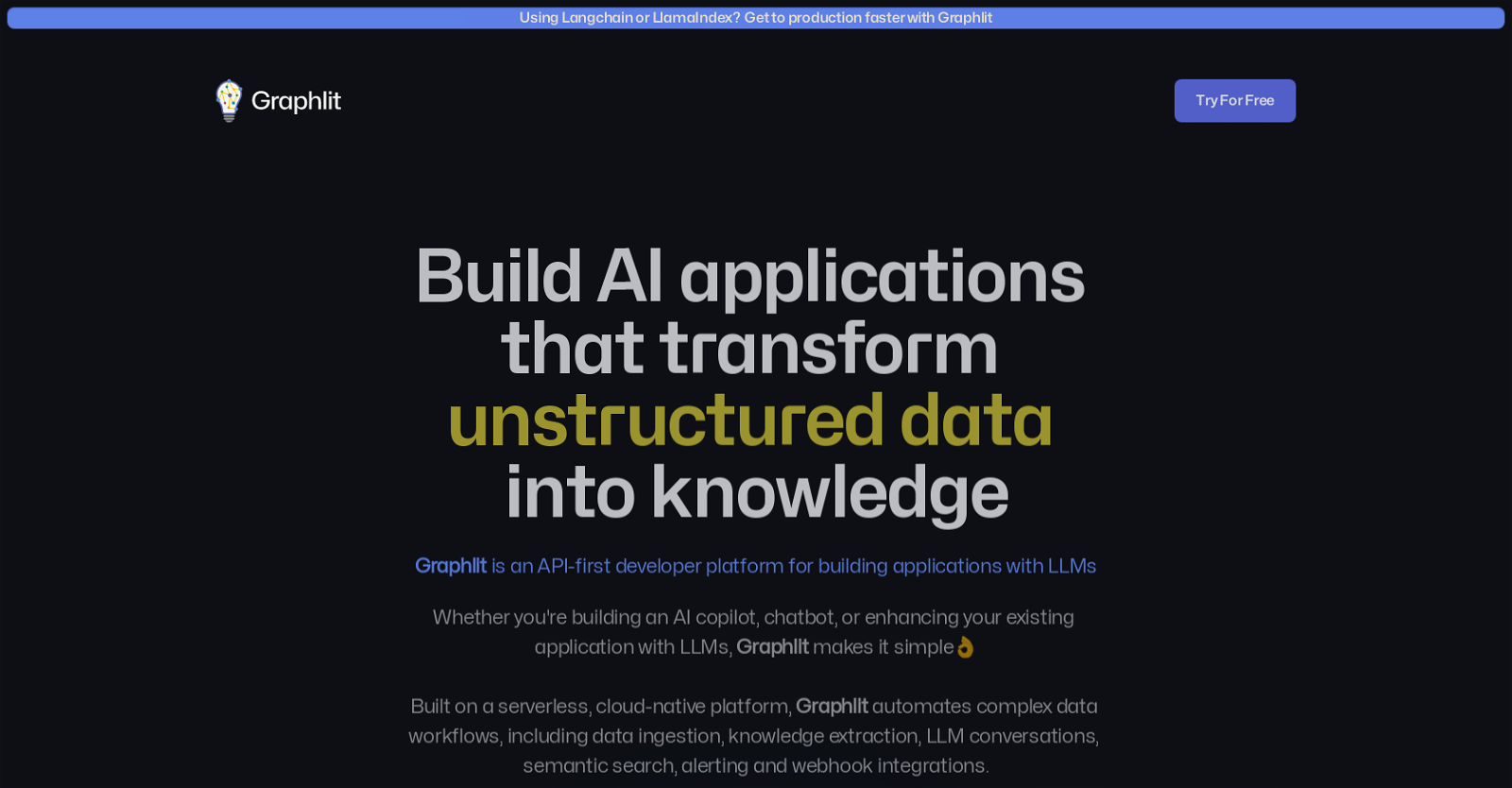The Graphlit API is a powerful tool for developers who want to build AI-powered applications with unstructured data. It offers a serverless, cloud-native infrastructure that automates complex data workflows, making it easy for developers to handle data ingestion, knowledge extraction, LLM conversations, semantic search, alerting, and webhook integrations. One of the key features of Graphlit is its ability to extract knowledge from any unstructured data source. It can process various types of content, including PDFs, web pages, images, RSS feeds, podcasts, Notion pages, YouTube videos, and Slack messages. This allows developers to build conversational knowledge graphs using Large Language Models (LLMs) like OpenAI's GPT-3.5 and GPT-4. The platform utilizes the Retrieval Augmented Generation (RAG) pattern and Schema.org's entity data model to transform complex data into searchable, contextualized knowledge graphs.
Graphlit also provides a multimedia content management platform that supports secure storage of content in various formats, including documents, audio and video files, and complex data formats like CAD drawings and geospatial data. Additionally, it offers powerful vector-based knowledge retrieval and media processing workflows for image thumbnails and previews. The platform is production-ready and offers granular usage tracking to help developers understand and manage their costs. It encrypts content storage and supports API access with role-based access control (RBAC) for enhanced security. Graphlit is developer-focused and offers a free tier to get started. Pricing for paid tiers is based on the amount of content ingested into the platform.
In conclusion, Graphlit is an API-first platform that provides a powerful tool for developers who want to build AI-powered applications with unstructured data. Its serverless, cloud-native infrastructure and ability to extract knowledge from any unstructured data source make it an ideal choice for developers who want to build conversational knowledge graphs using Large Language Models (LLMs). Additionally, its multimedia content management platform and powerful vector-based knowledge retrieval and media processing workflows make it a comprehensive solution for developers who want to build AI-powered applications with unstructured data.






